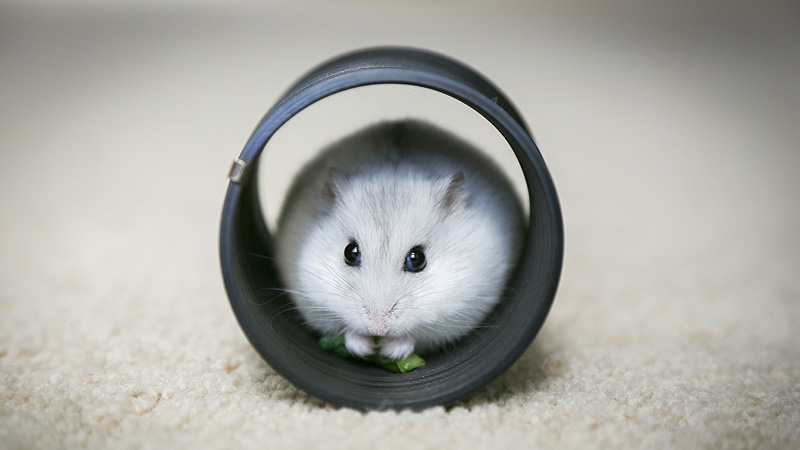Is a Hamster a Type of Rat? Debunking the Myth

Photo by Kim Green on Unsplash
When it comes to small rodents, people often mistake hamsters for being a type of rat. While they do share some similarities, hamsters and rats are actually different species with distinct characteristics. In this article, we will explore the differences between hamsters and rats, examining their physical traits, behavior, care requirements, and evolutionary backgrounds. By debunking the myth that hamsters are a type of rat, we hope to clarify any misconceptions and provide a better understanding of these fascinating creatures.
Evolutionary Background
Hamsters
Hamsters belong to the subfamily Cricetinae, which is part of the rodent family Cricetidae. This subfamily includes various species of rodents, including the common hamster (Cricetus cricetus), Syrian hamster (Mesocricetus auratus), Roborovski hamster (Phodopus roborovskii), and others. Hamsters are native to different regions of Europe, Asia, and the Middle East.
Rats
Rats, on the other hand, belong to the subfamily Murinae, which is part of the rodent family Muridae. This subfamily includes various species of rats, such as the Norway rat (Rattus norvegicus) and the black rat (Rattus rattus). Rats have a widespread distribution throughout the world and can be found in diverse habitats.
Physical Traits
Size
One of the primary differences between hamsters and rats is their size. Hamsters are generally smaller compared to rats. The Syrian hamster, which is one of the most common pet hamster species, can grow to be around 5 to 7 inches (13 to 18 cm) long. Other species, such as the Roborovski hamster, are even smaller, typically measuring only 2 inches (5 cm) in length.
Rats, on the other hand, are larger rodents. The Norway rat, for example, can reach lengths of up to 10 inches (25 cm) or more, with its tail adding an additional 6 to 8 inches (15 to 20 cm).
Body Shape
Hamsters and rats also have different body shapes. Hamsters have a more compact and rounded body, with short legs and a stubby tail. Rats, on the other hand, have a more elongated body with a long tail that is often longer than their body length. Rats also have a more streamlined appearance, which allows them to be agile climbers.
Fur and Color
Another noticeable difference between hamsters and rats is their fur and coloration. Hamsters come in a variety of fur types and colors. Some hamster species, like the Syrian hamster, can have long and luxurious fur, while others, like the Roborovski hamster, have shorter and denser fur. Hamsters can have a wide range of colors, including golden, brown, black, white, and even multi-colored combinations. Rats, on the other hand, generally have shorter fur that is more uniform in color. Common rat colors include gray, brown, black, and white.
Behavior and Temperament
Social Behavior
Hamsters and rats also differ in their social behavior. Hamsters are primarily solitary animals that prefer to live alone. They are territorial by nature and may become aggressive towards other hamsters if housed together. In contrast, rats are social animals that live in colonies. They thrive in the company of other rats and enjoy social interactions and play. Rats have a complex social structure and display sophisticated behaviors, such as grooming, playing, and communicating with each other.
Activity Levels
In terms of activity levels, hamsters and rats also show some differences. Hamsters are primarily nocturnal animals, meaning they are most active during the night. They tend to sleep during the day and have bursts of energy in the evening. Rats, on the other hand, are generally more active throughout the day and night. They do not have a strictly defined sleep-wake cycle and may have periods of rest and activity at different times.
Intelligence and Trainability
Rats are known for their high intelligence and problem-solving abilities. They can be trained to perform various tasks and tricks and are often used in scientific research as model animals for learning and memory studies. Hamsters, while intelligent in their own right, do not possess the same level of problem-solving skills and trainability as rats.
Care Requirements
Housing and Enclosure
Both hamsters and rats require appropriate housing to thrive. Hamsters need a spacious enclosure that allows for burrowing and exploration. A suitable hamster cage should have solid walls to prevent escape and provide enough room for nesting, tunnels, hiding spots, and exercise wheels. Rats also need a sizeable enclosure with multiple levels or platforms for climbing and exploring. Their enclosure should have bar spacing that prevents escapes and provides ample space for social interaction and exercise.
Diet and Nutrition
Hamsters and rats have slightly different dietary needs. Hamsters are omnivores and require a balanced diet that includes commercial hamster pellets as a base, supplemented with fresh fruits, vegetables, and occasional treats. They also enjoy gnawing on safe chew sticks to keep their teeth healthy. Rats require a diet that consists of commercial rat food, supplemented with fresh fruits, vegetables, and a source of protein, such as cooked chicken or eggs. Rats also benefit from chewing on safe and appropriate materials to maintain dental health.
Hygiene and Cleaning
Both hamsters and rats require regular cleaning and maintenance of their living environment. Their cages should be cleaned on a regular basis to remove soiled bedding, clean food dishes, and water bottles, and maintain overall hygiene. Both species also benefit from a dust bath or regular grooming to keep their fur clean and healthy.
Conclusion
In conclusion, hamsters and rats are distinct species with different evolutionary backgrounds, physical traits, behavior, and care requirements. While some similarities may exist, it is important to recognize the differences between the two. Hamsters are smaller, have a more compact body, and prefer to live alone. Rats are larger, have an elongated body with a long tail, and are highly social animals. Understanding these differences will help dispel the myth that hamsters are a type of rat. Whether you choose a hamster or a rat as a pet, providing them with appropriate care, attention, and a suitable environment is vital for their well-being and happiness.
You May Also Like
 Pet HamsterWhat is the Most Common Type of Hamster?
Pet HamsterWhat is the Most Common Type of Hamster? Pet HamsterWhich Type of Hamster is the Friendliest?
Pet HamsterWhich Type of Hamster is the Friendliest? Pet HamsterCan Hamsters Spread Diseases to Humans?
Pet HamsterCan Hamsters Spread Diseases to Humans? Pet HamsterCan a Kid Be Allergic to a Hamster?
Pet HamsterCan a Kid Be Allergic to a Hamster? Pet HamsterIs It Better to Have 2 Hamsters or 1?
Pet HamsterIs It Better to Have 2 Hamsters or 1? Pet RatsExploring the 7 Different Types of Pet Rats
Pet RatsExploring the 7 Different Types of Pet Rats